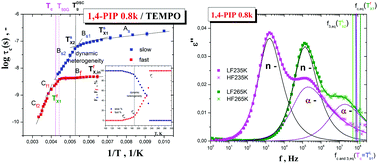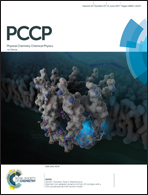Molecular dynamic heterogeneity in relation to free volume and relaxation dynamics in organic glass-formers: oligomeric cis-1,4-poly(isoprene)
Abstract
Herein, a combined study of the molecular rotation dynamics and free volume in cis-1,4-poly(isoprene) using two external probing techniques via ESR and PALS together with relaxation dynamics of the host medium via BDS is presented. The spectral evolution of the spin probe TEMPO from simulations over a wide range from 100 K up to 300 K exhibits three different regions of its correlation time consisting of a slow regime at low temperatures followed by the molecular dynamic heterogeneity zone from TslowX1 = Tfastin = 155 K = 0.82 × TDSCg up to Tc ≅ 236 K = 1.26 × TDSCg and ending with a fast regime at high temperatures with the further characteristic ESR temperatures, TslowX2 = 186 K ≅ TDSCg and TfastX1 = 260 K. These are in close coincidence with four characteristic PALS temperatures: TGb1 = 160 K, TPALSg = 190 K, TLb1 = 227 K, and TLb2 = 263 K. Finally, using BDS, we revealed that the high-frequency features of the structural relaxation of 1,4-PIP 0.8k were related to the observed effects in the ESR and PALS response of the liquid state.



 Please wait while we load your content...
Please wait while we load your content...